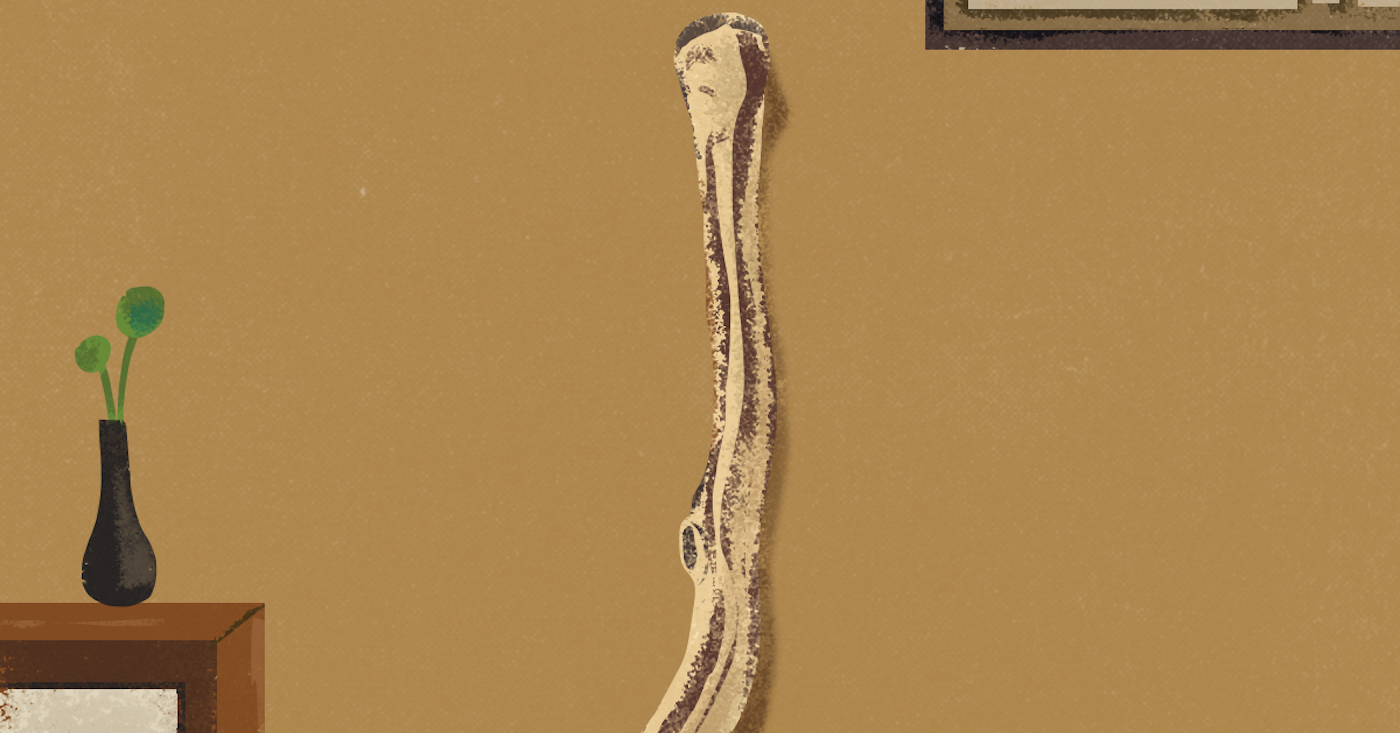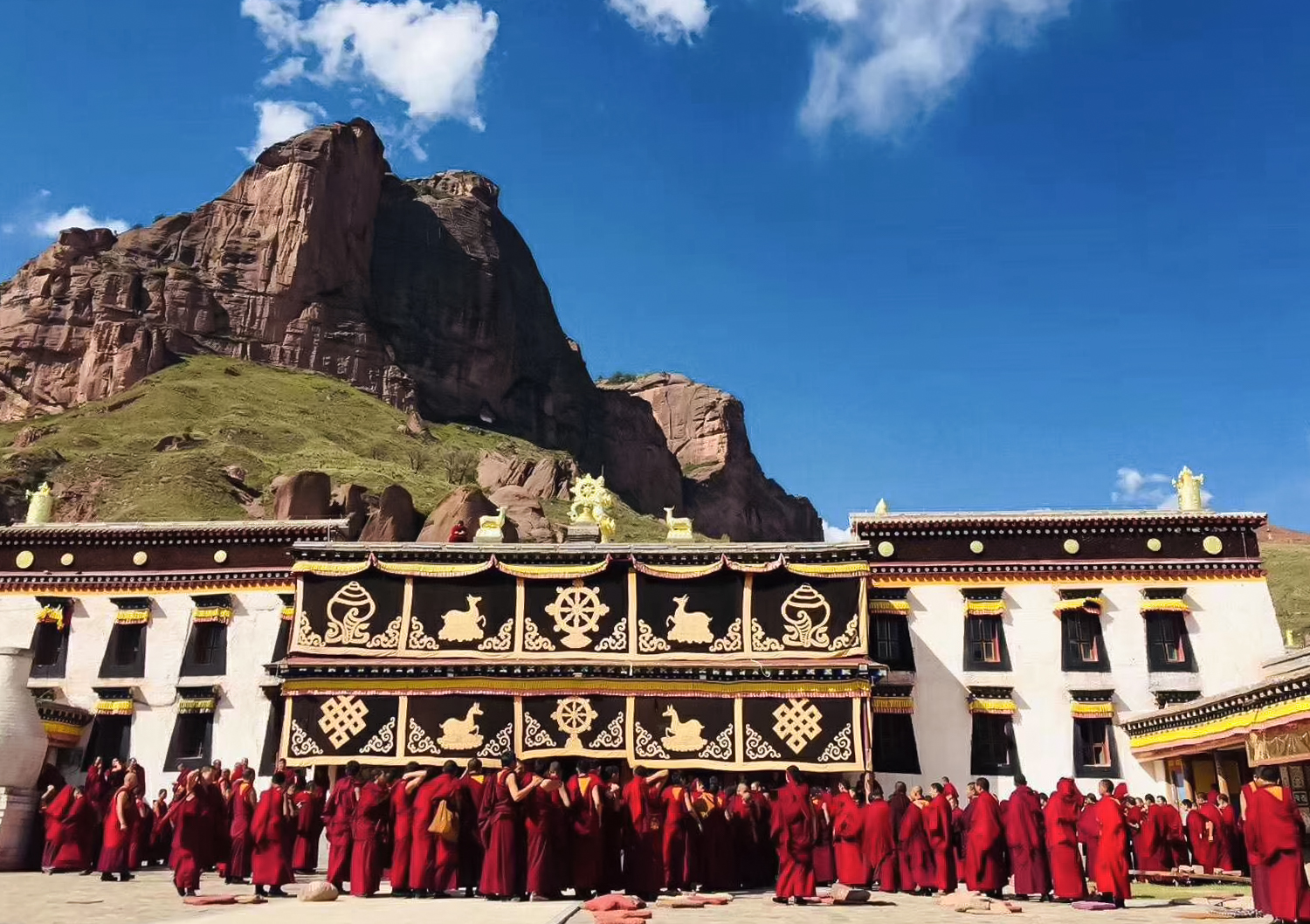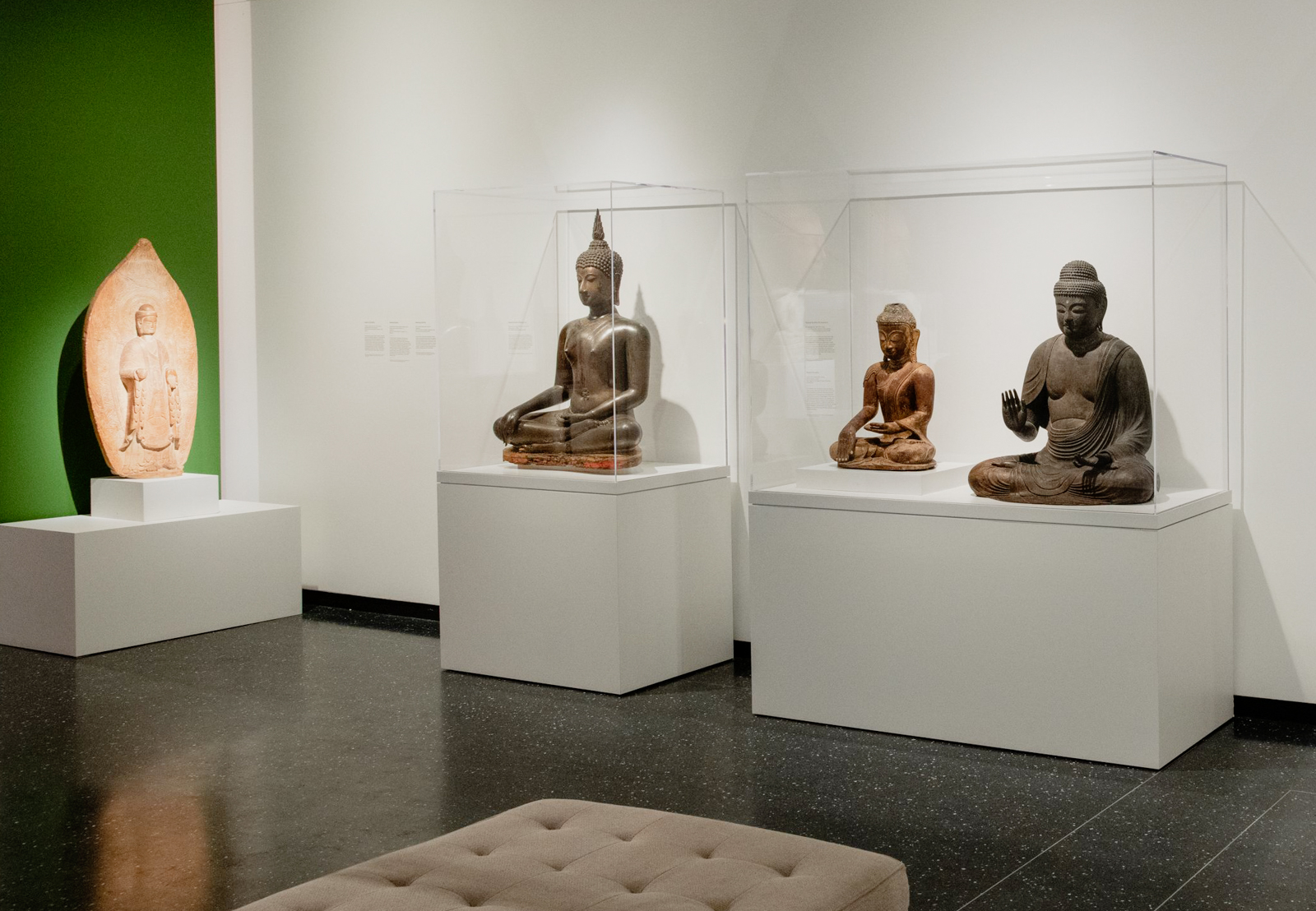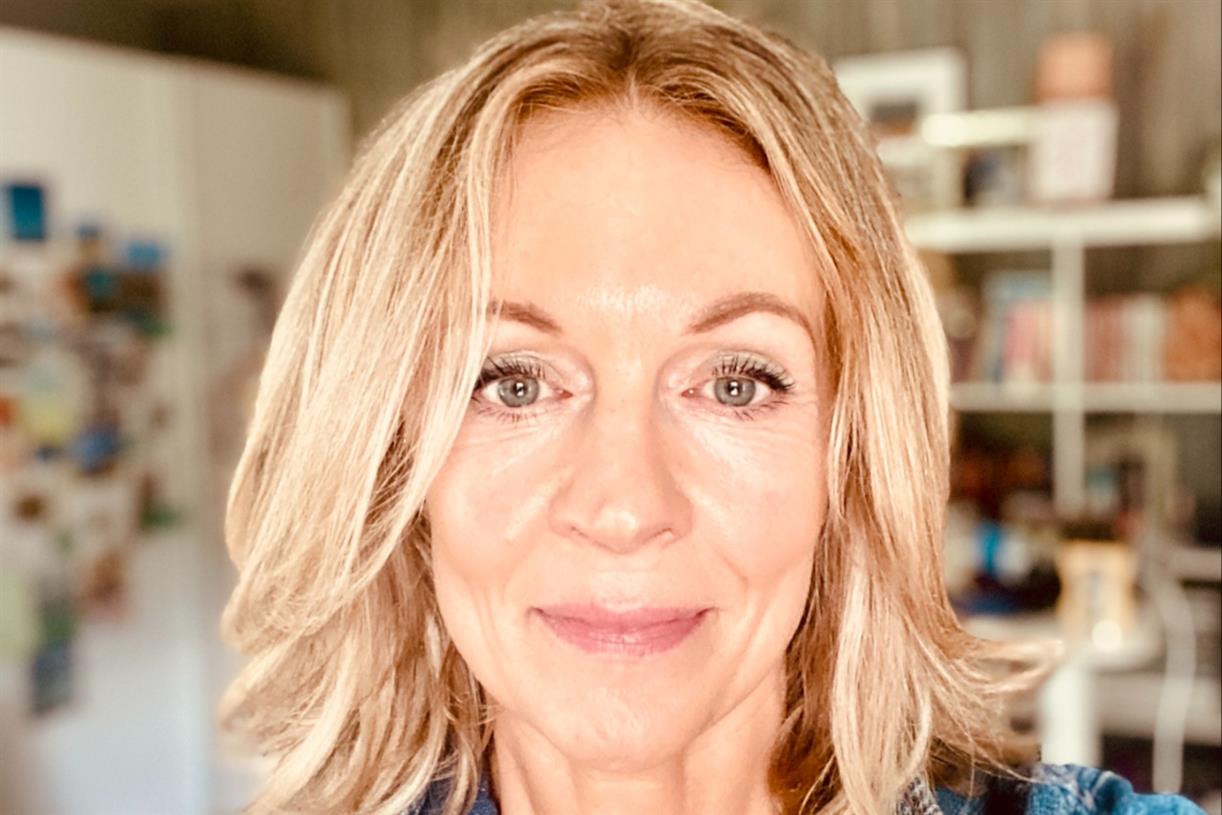A Cane for Suzuki Roshi
A young disciple carves a cane for his dying master. The post A Cane for Suzuki Roshi appeared first on Tricycle: The Buddhist Review.

Early in the summer of 1971, I was living at Tassajara, San Francisco Zen Center’s mountain training center near Big Sur. Suzuki Roshi came for several weeks in May and June; I was his attendant and saw him every day. At that time his health seemed good. But by late summer, when he was back in San Francisco, Suzuki had become ill. His doctor at first thought it was hepatitis. The doctor told his wife to cook chicken livers to help him keep up his strength, so she did, sauteing them in soy sauce. Suzuki didn’t like them, but he dutifully ate them.
I was still at Tassajara. Knowing that my teacher was ill, I felt sad and forlorn, and I missed him. I went about my work in a daze. Even though that September I was due to be ordained by Suzuki as a priest, for the moment he was far away and I hungered for any news that he might be getting better and for the time when I might see him again, hopefully recovered.
Near the wood shop where I worked there was the stump of what once had been a majestic olive tree. It had been cut down many years before, but now new branches were growing out of the stump, each about four or five feet long. For some reason my attention kept being drawn to that tree. Then one day I had a vision of the tree trunk as Suzuki, and the branches as us, his students. Somehow seeing the tree that way lifted my spirits. I cut off one of the branches and over the next few days, using hand tools and sandpaper, shaped it into a walking stick of a length that I thought would be right for Suzuki.
That fall I returned to the City Center, and saw for myself how ill and weak Suzuki was. His skin had taken on a deep yellowish cast, his face was wan, and he was thinner than I had ever seen him. I waited for an opportunity to give Suzuki my newly carved cane. My room was just down the hall from his apartment, so when I saw him walking in the hallway, I quickly got the cane and offered it to him.
Suzuki quietly took the cane, thanked me politely, and walked back into his apartment. I felt a little disappointed. Making that cane was important to me, and I suppose I wanted him to acknowledge that. But that was just me, lost in my sadness. He had more important things to think about, as we would all soon discover.
A couple of days later I saw him in the hallway again, but he was not using the cane. To be honest, I don’t think he really needed a cane, and I had probably made it too short for him anyway. Nevertheless, he looked at me and I looked at him. Nothing else happened.
However, the next day I saw him tapping along using the cane to support himself. I felt better. I had done what little I could. I was just a young man grieving what increasingly seemed to be a dire illness, and he was a much older man who had seen everything. That was the ground where we met, and the cane was our connection.
When he did not seem to be getting better, his doctor had him go to the hospital for some tests. He spent the night in the hospital. His close disciple Yvonne [Rand] visited him there the next day and told me later what transpired.
When the doctor came into his hospital room to tell Suzuki the results, Suzuki took one look at the doctor and said, “I am a religious person. Tell me the truth.”
The doctor told him that he had liver cancer, and that he did not have long to live. According to Yvonne, Suzuki took the news without flinching. I think he already knew. Earlier that summer he had dropped hints in his lectures that he might not be with us for too much longer. “Sometimes when something is dying,” he said then, “it is the greatest teacher.”
Shortly after, in a hastily called meeting, Suzuki invited those of his ordained disciples that were in the City Center to come to his bedroom for an important announcement. We were a group of about ten people, all wearing our priests’ robes due to the importance of the occasion. Having just been ordained, I was still getting used to my new robes and felt awkward in them. I had never been in Suzuki’s bedroom before. As we crowded around his bed, waiting to hear what he would say, it felt strange for me to be there in his private space, but also comforting. I could tell from the expression on Mrs. Suzuki’s face as she let us in the room that the news would not be good.
Sitting on his bed in his underrobe, he calmly told us the news. A small cassette tape recorder on the bed recorded what he said so it could be sent to those disciples who could not make the meeting. “I asked the doctor,” Suzuki said, raising his voice a bit so the recorder could pick it up, “if I could have two years more. Is it possible? The doctor said, ‘Two years at most.’”
For a moment that seemed like a shred of good news. But as we found out soon enough, it was not to be. He was dead in three months.
I was in shock. I knew he was ill, but I hadn’t expected this. Time stopped for me. There was some brief discussion after his announcement, but there wasn’t much to say. Each of us was quiet, alone with our own surprise and sadness. As everyone filed out, I was reluctant to go. I turned back and awkwardly bowed to Suzuki. He looked up at me and saw, I suppose, a young man who loved him and who had just had his guts kicked in.
“Hi,” he said in a friendly way. That was all. “Hi.”
Some days later, each of the ordained disciples was given a chance to see Suzuki privately one last time. As soon as I entered his bedroom I could see that he was already much weaker. He lay on his back in bed and seemed to be sleeping, but hearing me enter he opened his eyes, smiled and said, “Oh, Chikudo-san.” That was the first (and last) time he addressed me by my ordained name. We made small talk about my new priest robes for a minute or two.
As we spoke I struggled to find words. I wanted to ask him so much: what I should do, where I should go, how I should find my way when he was gone, but it was all too big for words. Finally, speaking in metaphor, I referred to the new temple bell that had just arrived at our center, which I knew he could hear from his room, and said, “We have a new bell here now, but we don’t know how to hit it yet.” In this way I tried to express my grief and confusion, a newly minted priest who was losing his teacher, and who didn’t know what to do.
Whether he couldn’t make sense of what I was trying to say, or simply had no more energy to speak, he just closed his eyes and turned away from me. Or perhaps he was indicating, without saying so, that those questions were for me to answer now, not him.
In any case, it was time to go.
After Suzuki died, his wife gave the cane I had made for him to Chogyam Trungpa, a Tibetan Buddhist teacher who had been close to Suzuki. I’m told by people close to Trungpa that he kept that cane on his altar next to a photo of Suzuki for the rest of his life. I only met Trungpa once, when he came to visit our center to pay his respects after Suzuki had died, but it seems that I had remained connected to him for much longer through that cane. Objects sometimes take on a life of their own.
This article is an excerpt from the author’s forthcoming book, The Wisdom of Suzuki Roshi: Personal Stories, Teachings, and Reflections.

 Koichiko
Koichiko 































